Today’s NIO Media Briefing on European Subscription Model
At the media communication session held by NIO today, many post-conference questions were answered, and the following are the most frequently asked questions and answers:

Q: Why does NIO implement a subscription model in Europe? Many new car manufacturers view Europe as an important target, what new products and services can NIO bring to European consumers?
Li Bin: After the announcement of NIO subscription yesterday, there was still a lot of controversy, and the controversy in China was greater than in Europe, where some users claimed to be buying flexibility. However, from the standpoint of subscriptions, NIO has undergone a long and in-depth consideration process, and many of its ideas are more systematic. Just like the battery-swapping feature, it was not inspired by other companies doing so.
I think in the entire field of intelligent electric vehicles, from an ultimate standpoint, if we think about some very foundational things, I think this car itself will become a service, ultimately. And this service, because the car itself is not a house, it is just a high-value, durable consumer product. If it is a consumer product, users used to have to worry about many things, and we actually hope to simplify this service.
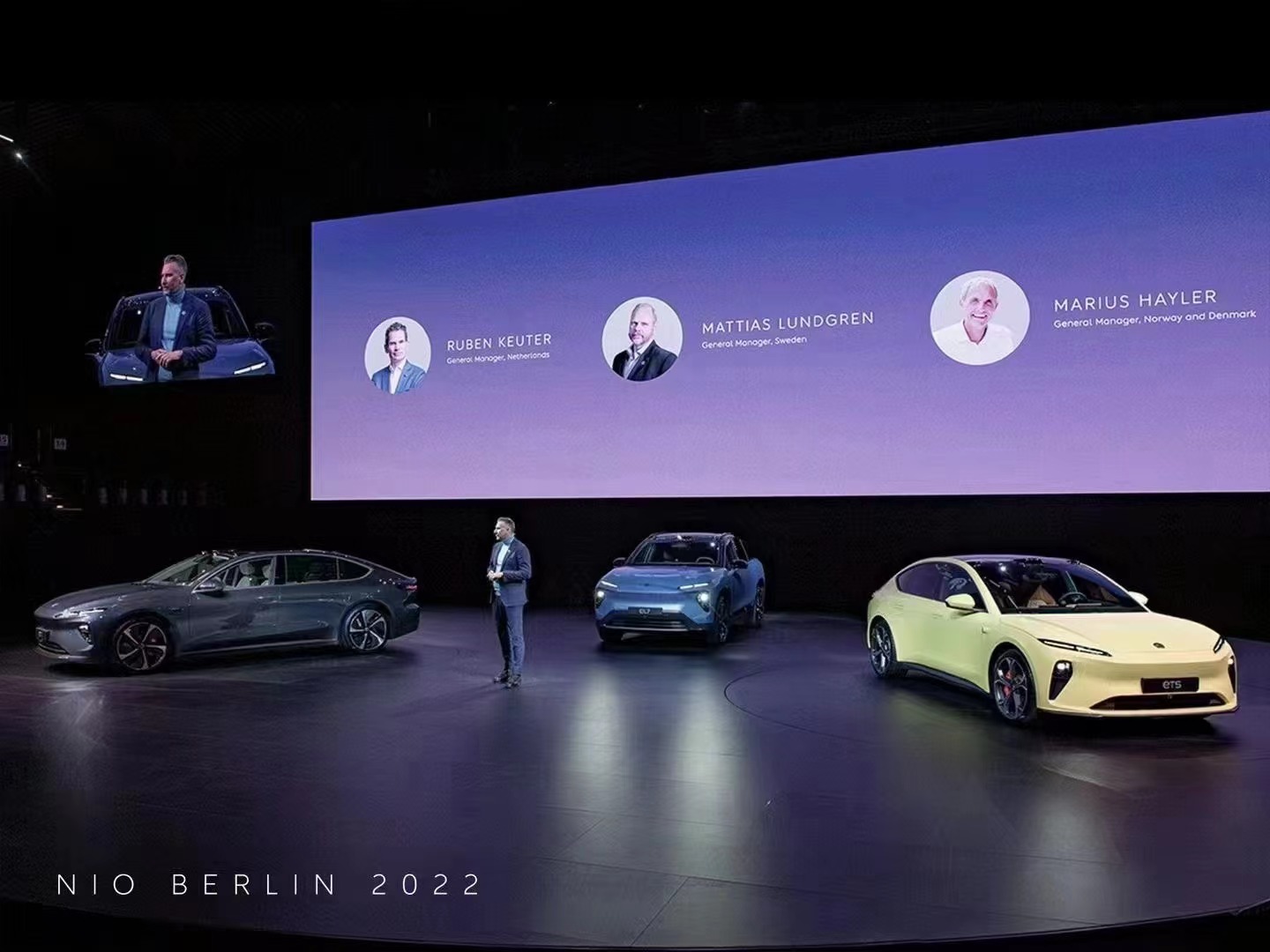
NIO has been trying for many years, such as with its services like “Service without Worry” and “Battery as a Service.” If we really turn the entire car into a subscription-based service, it requires a combination of circumstances: the right time, the right place, and the right people. If you try to do this in China, it is very difficult because I don’t have so many licenses to get involved in this. How can I do it? In Europe, there are not the same limitations. Moreover, the policies of each country vary as to what type of leasing it really is.
If you look at Europe, we still sell cars in Norway this time, and we launched subscription services in the other four countries. Why is this so? Because the tax system is different in each country. Just like in Norway, there is no import duty, no VAT, and these basic things are different from other countries, so the car prices are also different. In addition, these countries in Europe have a very important tradition, which is company cars. Company cars have become a reasonable tax benefit for buying high-end cars, and people use their post-tax income to buy cars that are assigned by companies. The difference in taxes is huge.
In the high-end car market, company cars and subscription services have already accounted for nearly 60% of the D, E, and F segments. Of course, there are still some people who want to buy cars. Some of them cannot enjoy the benefits of company cars due to the required level and income. Therefore, except for Norway, the majority of Europe has company car and subscription systems, which is something that everyone can understand and accept. This is also related to the tax system and consumption habits. It is also the basis for NIO’s commercial decision-making. Why doesn’t Norway use it? Because less than 10% of the population who enjoy the tax system of company cars in Norway, which is why they choose to purchase the cars outright.
Secondly, at present, it is not flexible enough, and many pain points have not been solved. If you visit our website and look at each app subscription method, you will find that there are still major differences with the ways that others are doing subscriptions in Europe. To be more user-friendly and flexible, there are still plenty of spaces for user experience, innovation, and efficiency improvements based on subscriptions and company cars.
Despite company cars and subscriptions accounting for 60% of the mainstream market, there is still room for innovation, as we are not using subscription companies or financial companies as a third party. We are doing everything directly as an automaker. By reducing intermediaries through selling cars in retail, users can also enjoy an improved experience.
Thirdly, we have just formed a European team, and we hope that each team can maintain its focus. For example, in Norway, we only sell cars and do not do rentals or subscriptions because there are not many people interested in renting. Except for Norway, all other places are for subscriptions. If we focus on subscriptions, our team can remain focused without juggling both sales and subscriptions, as they require different logics and can be complicated. Our team is still expanding, and we need to focus on various aspects of our business system.
Lastly, subscriptions are more difficult because they involve strong operations. If we are already selling cars, adding a selling option for subscriptions is not difficult, but it is much harder to start with subscriptions and then move to selling cars. This involves a different level of logic, which can be difficult.If we judge, roughly 1/4 or 20% of users are very persistent in wanting to purchase because they have removed 60% of company cars and subscribed. In general, there will definitely be trade-offs, and at the outset, we focus more on the 80% of users, of course, we may not be able to cater to this 20% of users. This is our business compromise, not that we are crazy.
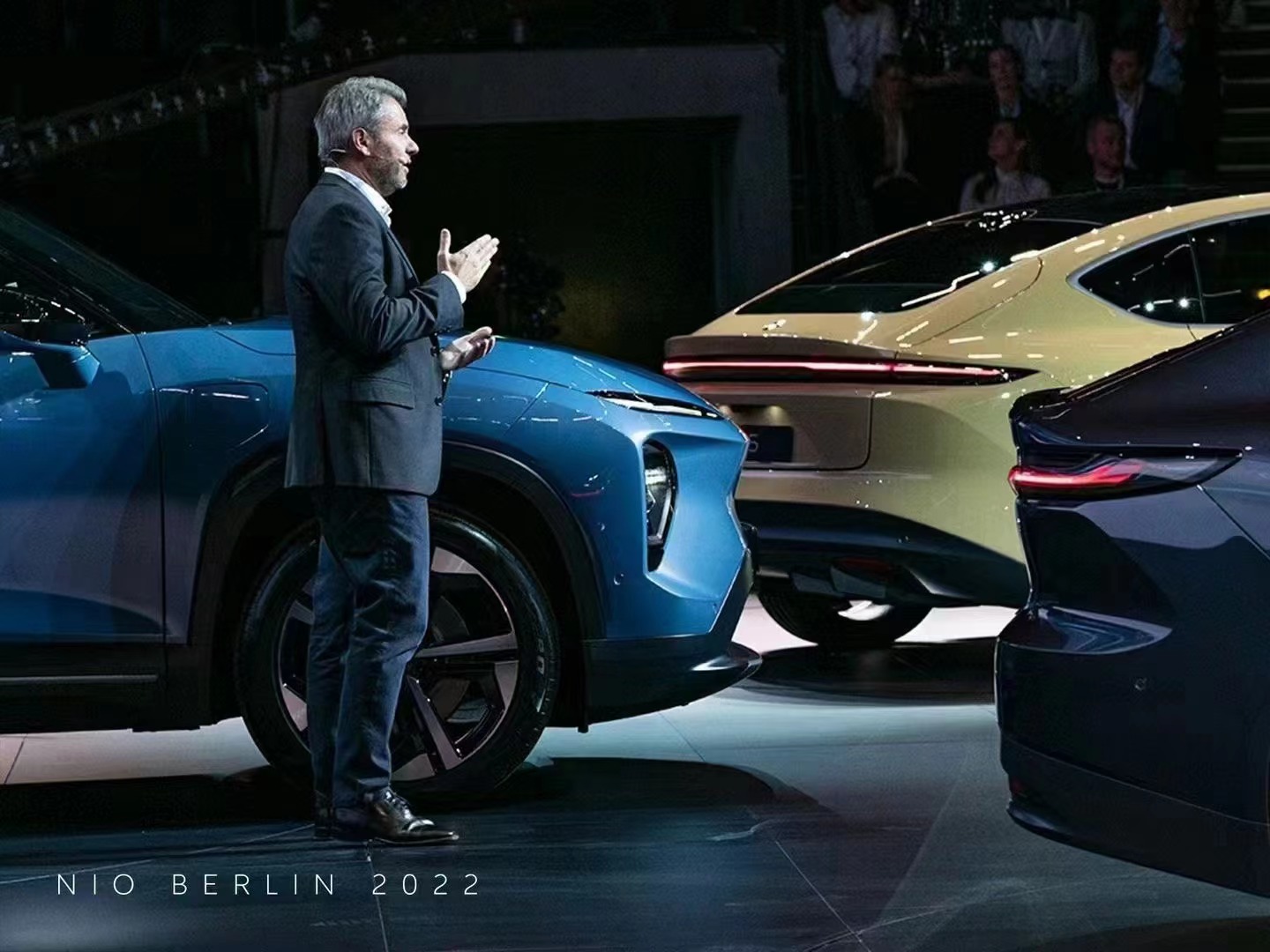
Q: Some netizens feedback that the subscription price is relatively high, basically on par with the leasing prices of Porsche Taycan and Mercedes-Benz EQS. Secondly, how specifically will it be sold? Will it be cooperation with local leasing companies or building more touch-points?
Qin Lihong: Firstly, regarding the price issue, I think it is reasonable that we are similar in price to certain models of Porsche and Mercedes-Benz. This is the level that the product power and value of the vehicle should have. For example, in China, many of us may be accustomed to thinking that the same car should be several million cheaper when it is a Chinese brand compared to a German brand. We did not consider this factor. We let the product return to its essential value.
The second point is, before the event yesterday, we talked with many users, potential users, media and partners. Everyone hasn’t fully adapted to our pricing system, because our subscription price includes a lot of services. It is not an Apple-to-Apple comparison. For example, we include insurance, winter tires, pick-up and delivery services, maintenance services, and so on, which may not be included in other brands. So it will take a little time to adapt to this.
This question just illustrates our current task, which is to further communicate with European local media, society and users to understand NIO’s pricing system. We offer an all-in-one price. Others price their cars and then add many additional charges. Finally, they use pricing to gain a relative advantage. I think we will stick to our approach to let everyone get used to our pricing system. Once they get used to our pricing system, they will not be accustomed to other pricing systems that do not include all these services. They may feel that it is very troublesome or insincere. This is our true plan for NIO, and you can also see it as a strategy.- The second point is that sales will still be carried out by NIO, regardless of the leasing and subscription model we are implementing in Europe. I think it is important to maintain a complete brand and product experience, so we will still have NIO Houses, NIO Spaces, and battery swapping stations in Europe. We will also organize user events and other activities, many of which will be the same as those in China. The only difference is the purchase. If you decide to spend more and use the car for a few more years, it will belong to you. Subscription means that you can maintain a certain level of flexibility, but you still use the car for a relatively long time.
-
Yesterday, we noticed two details. One detail is that although we announced a very flexible subscription service, we also announced a stable price for long-term subscriptions of 12 to 60 months, which comes with some discounts. What is the difference between this and buying a car? Except for the paperwork required for transferring ownership twice, there is no difference. Another detail that many people may have missed is that when we released the prices yesterday, we also launched the configurator on the NIO app and the official website in Europe. Unlike NIO Day in China, where we only released the price of one product, we released the prices for hundreds of cars on the configurator. Each car has a base price, but the final price varies based on its configuration. This puts a lot of pressure on our operational capabilities.
-
Personally, when I saw the prices for hundreds of cars on the configurator when it was launched yesterday, I felt like it was a huge victory for us, because our operational capabilities have already surpassed those of our sales team in China, even though our team in Europe is still small. And this is just the beginning. These things are different, but there is no fundamental difference between this and our insistence on the direct sales method.
-
Q: Europeans may view cars as more of a tool. Will the entertainment and leisure options, especially in NIO Houses, appeal to them?
-
Li Bin: There will be no shortage of entertainment and leisure options. We have already built them in Norway. The first batch of NIO Houses in Europe are all very large, with areas of about 1000 square meters or 700-800 square meters. In fact, there will be even richer content. In this regard, I think the demand of European users will be higher.>Q: European users have provided feedback saying that there are a bit too many LiDAR and cameras with this current design. Also, during the press conference, you did not emphasize the driver assistance function.
This function is a priority in China. Because yesterday after the press conference, when I was talking with Li Hong, I said, “You may only have a few hundred cars in the initial stage. How do you balance the relationship between the driver assistance input-output ratio in the European market?”
Li Bin: We started the testing of the driver assistance system here in Germany since April last year. Because, as you know, we are self-developing the whole stack, and many things in the driver assistance system, such as AEB, we have to do it ourselves.
We already have a sizable fleet for testing not too far from here (Berlin), where the center of innovation for intelligent systems is. Our team is also expanding rapidly.
Whether it is the automatic driving or the driver assistance system, the regulations in each country are significantly different. If we want to provide services here, we have to do all-around adaptation, and it is impossible without a local team. Although many underlying technologies may be similar, the deployment, testing, and compliance always vary from place to place. Therefore, this is our long-term plan.
Of course, from the perspective of the overall direction, I think the sensors (position) on future cars will probably be similar to ours, including those for European cars. We could observe this change in three to five years.
This is because rationality is essential. For instance, when you take a photo with a mobile phone, the camera protrudes a little bit. It may make you feel a little uncomfortable at first glance, but it can take better pictures. Gradually, people will feel less progressive and less advanced if the camera is not protruding. This is the “mindset” of people, which always feels uncomfortable when you look at it from a single point of view. However, if you think about the reason behind this, you will feel different.

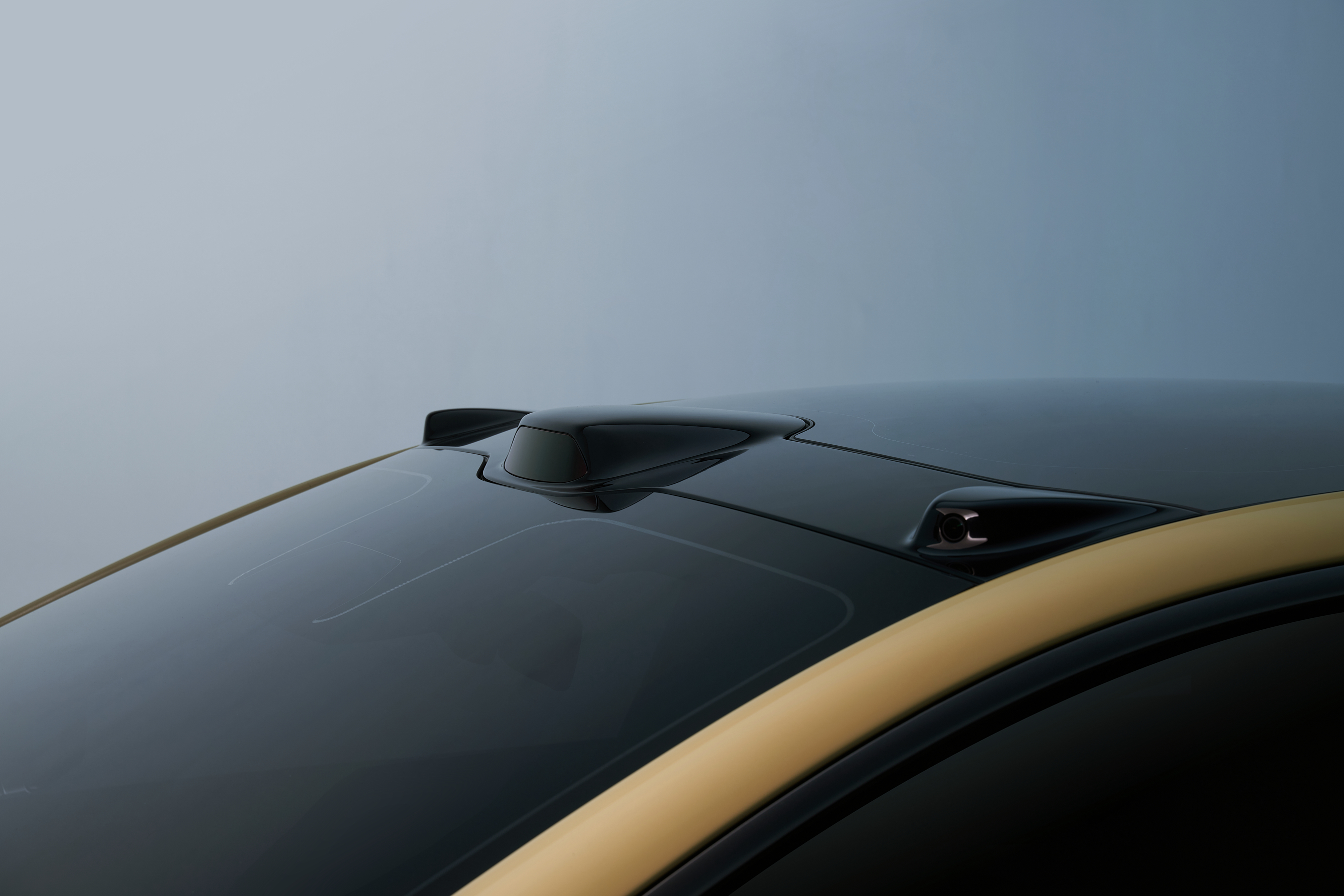 You mentioned the two cameras installed on the roof yesterday. The 8 million pixel camera has many advantages, such as a smaller blind spot. When combined, the two cameras can serve as the main camera backup, providing redundancy. They can also combine to cover the front 180 degrees.
You mentioned the two cameras installed on the roof yesterday. The 8 million pixel camera has many advantages, such as a smaller blind spot. When combined, the two cameras can serve as the main camera backup, providing redundancy. They can also combine to cover the front 180 degrees.
From a technical perspective, many of the underlying technologies are similar, but local adaptations are necessary. This is a common issue faced by all autonomous or assisted driving technologies, such as Tesla’s FSD. The timeline for deployment in China may be longer, as it requires early deployment.
As for the landing time of the function, it still depends on local laws and regulations.
Q: What are your insights on the 2,500km journey in 10 days, including cultural differences, charging facilities, and user awareness?
Qin Lihong: There are still some differences. The number of electric vehicles on the streets in Europe is not that high. Even in Norway, where electric cars make up about 80% of new car sales, the number of electric cars on the streets is still fewer than we expect. In Germany and Denmark, for example, compared to what we’re accustomed to seeing on the streets in China, we can conclude that the big development of electric cars has not yet arrived, so what we see is still an opportunity.
In addition, Li Bin also mentioned earlier that the charging experience on highways in Europe is still good, thanks to the technology and experience of the charging stations. However, the entire layout still needs to be developed. For example, finding a charging station in a city can be very troublesome.
It is still relatively complicated in cities, but we see this trend, and we also see some companies working very seriously on research and investment in this. In general, my personal impression is that the infrastructure take-off is imminent, at the early stage of entering the fast lane in terms of ownership.
So, at this time when we arrived in Europe, in this industry, we are laying out from cars to integrated services. I think we still have relatively good opportunities, and the timing is good.
Secondly, we believe that consumers are consumers, and users are users. On this trip, Li Bin and we have attracted a lot of onlookers. Every time we stop at a service area, a group of people will come up and ask questions, look at the car, and ask about the price. We invite them to download our app and watch our press conference. Our existing users include those in several other countries, some of whom are potential users who have not yet received the car but are members of our user consultant team. All these people are very friendly and enthusiastic.My personal feelings are similar to the feeling of being with our NIO users in China, except for the difference in language. Even some users give the exact same feedback. After listening to them, we still have a lot of familiarity. Although it is a foreign culture, looking at it from a commercial perspective of users and consumers, there are also many commonalities.
Li Bin: 9 out of 10 of our cities are our first time visiting. It let me get to know Europe again. I think Europe is even more resilient, profound, and has more potential than I imagined. So there are some things that we can’t just rely on reports and numbers to understand, but sometimes we must experience it. I think I feel many different perspectives and some different ways of doing things have a big difference.
For example, like this charging pile, in Europe, the charging pile is actually treated as a service, and they consider it very comprehensively at the service area on the highway. In China, we may only need to satisfy having a charging pile and it is okay if it can be charged. But in Europe, it is indeed treated more as a service, and it’s more systematic, and more holistic in their thinking.
Q: Previously, NIO talked about “having one of the three realms” in China. Now we are essentially entering this Europe and entering the stronghold of BBA (Mercedes-Benz, BMW and Audi), so has this goal changed? Also, do we know if NIO is doing this Alpine Plan? Will this brand also enter the global system in the future?
Li Bin: If we say “having one of the four realms” in foreign countries, would that be better? Actually, it is definitely not that easy. But from the perspective of the high-end market, China accounts for 40% of the global market. Then Europe and the United States together account for nearly 50%. If you want to enter the high-end market and not perform well in the United States and Europe, it really is difficult to have global competitiveness. So without a doubt, we will be cultivating the European and American markets in the long run. Of course, as for the timing, it’s better not to set a deadline, because there will always be a day when we reach it. If we set a deadline, the pressure will be too great, but of course, we have our own reasonable plan internally.
As for the Alpine Plan, of course, it will also enter the global market. This is the same, it won’t only be in China.
Qin Lihong: It’s called the Alpine name, how can we not come to Europe?
Li Bin: This Alpine is the project code name. Yes, let me tell you something interesting. The original code name was Everest or Himalayas. I said it was too cold, too high, and too arrogant. I said we should name it after a warmer and lower mountain. So we chose the Alves code name.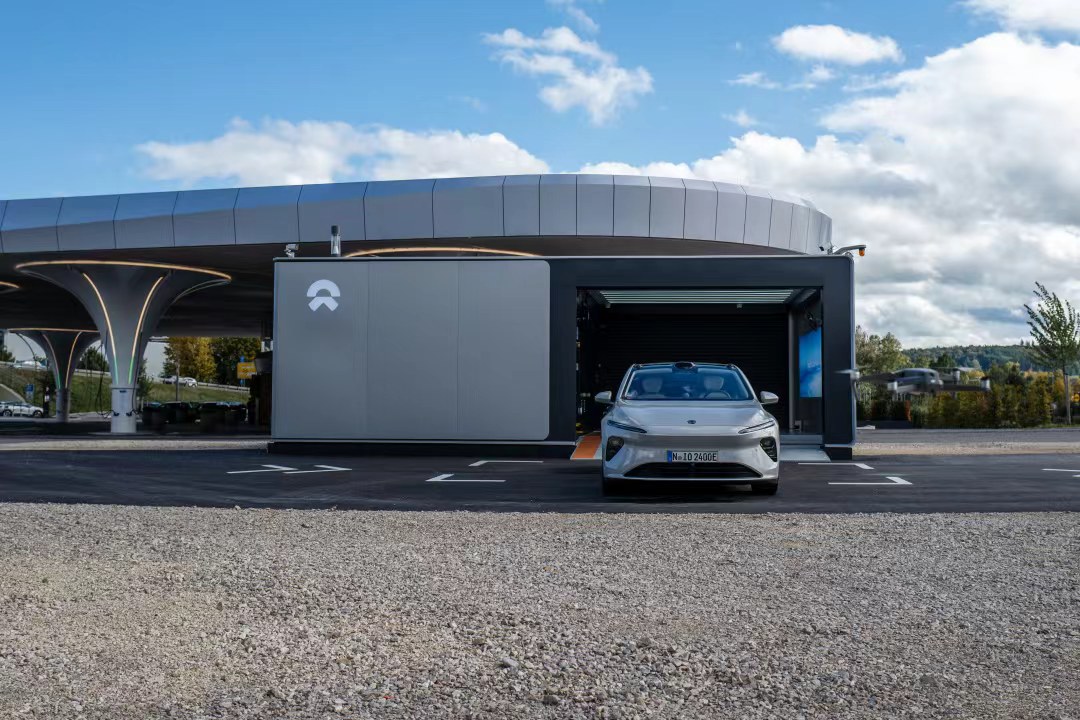
Q: In terms of battery swapping, there are joint ventures between domestic OEMs and the industry chain to expand the battery swapping business. As NIO is one of the early companies in Europe to engage in this area, will NIO cooperate with some advantageous companies in the industry chain to expand the battery swapping mode in the future?
Li Bin: We have many collaborations in China with Sinopec, PetroChina, Shell, and State Grid. Our battery asset company also has shareholders who are battery companies. It’s definitely a positive thing that more and more companies are investing in this field. We also welcome it.
Of course, we also call for attention. If we use our patents or utilize innovative technologies, we should cooperate with us. We also call for a higher standard for everyone.
Regarding foreign cooperation, we have a good partnership with Shell and many local companies. However, this cooperation is more business-oriented. At the capital level, we don’t have such an idea yet. We welcome other car companies to use our technology and overall solutions.
This year on NIO Power Day, we also mentioned the development of the next-generation 800 V battery swapping system. We welcome everyone to communicate with us, and many manufacturers are discussing with us in this regard.
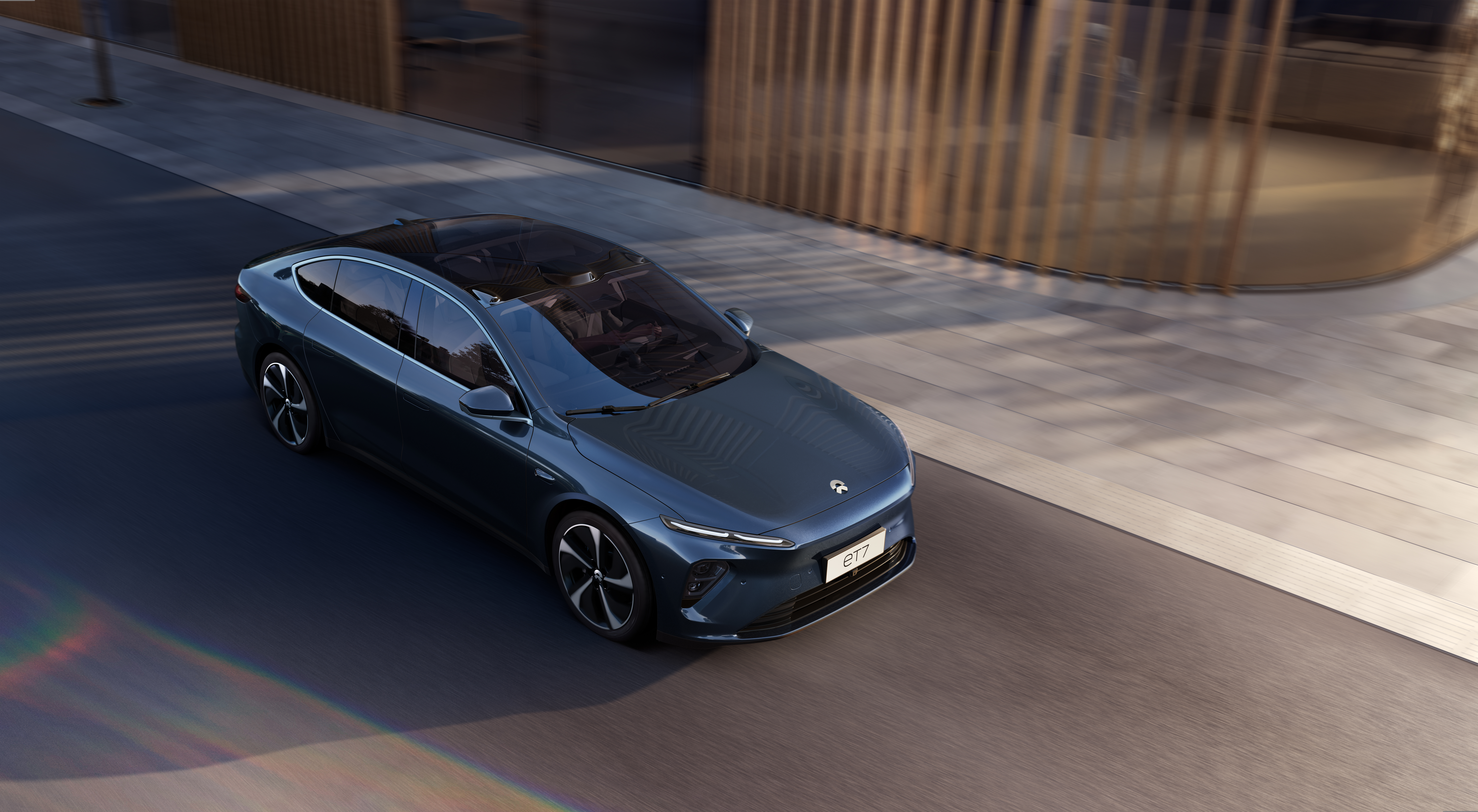
Q: For many media outlets in the automotive industry, it’s crucial that NIO has actually gone to the BBA’s stronghold this time. I believe that there are still many disadvantages to compete directly with BBA in their home turf, so what advantages does NIO have in its competition with them?
Li Bin: I think NIO’s innovation and thinking is not just about thinking from one point. If you have been paying attention to us for a long time, you should know that we are a very systematic and innovative company. We don’t only focus on one specific technology or service, we are a complete system.Since 2015, when we started, until London released its logo in 2016, we have been doing a lot. We have been continuously using different products and services to convey our thoughts on the intelligent electric vehicle product. When we actually came to Europe, everyone saw that we were still a complete system. We did not simply export the car here and sell it. We have always insisted on a very complete systemic output starting from Norway.
So, if you ask what NIO’s advantage is, I believe it is that we truly cater to the trend of the development of intelligent electric vehicles and build a systemic R&D and supply chain product system. We truly follow the trend of the mobile social era, and as a starting point, we build an automotive-based community to construct our entire company’s business and mission.
We have done a lot of things. We didn’t suddenly decide to come to Europe. Actually, from the first day of our establishment, we never thought that we would only sell cars in China. From the first day of our establishment, we have been preparing to serve users globally because we know that if you want to become a truly competitive company, relying only on the Chinese market is definitely not enough.
The history of the automobile industry for more than a hundred years has proven one thing, that if you want to become a globally leading automobile company, you cannot solely rely on one country, even if it is a large market like the United States. So, from vision to action, this is how we do things.
In addition, I would like to add something. Of course, I understand everyone’s feeling that this matter is satisfying and glorious. However, we did not do this matter with any conqueror-like or conspiracy-like emotions. This is all market-driven rationality.
If you want to do high-end cars in Europe, Germany is an unavoidable market. It is said that Europe is mainly made up of small cars, but Germany is actually composed of mostly middle and high-end cars. The proportion of vehicles above Class D is very large, both in absolute numbers and market share, and the entire automobile industry, including sales and service, is relatively complete.
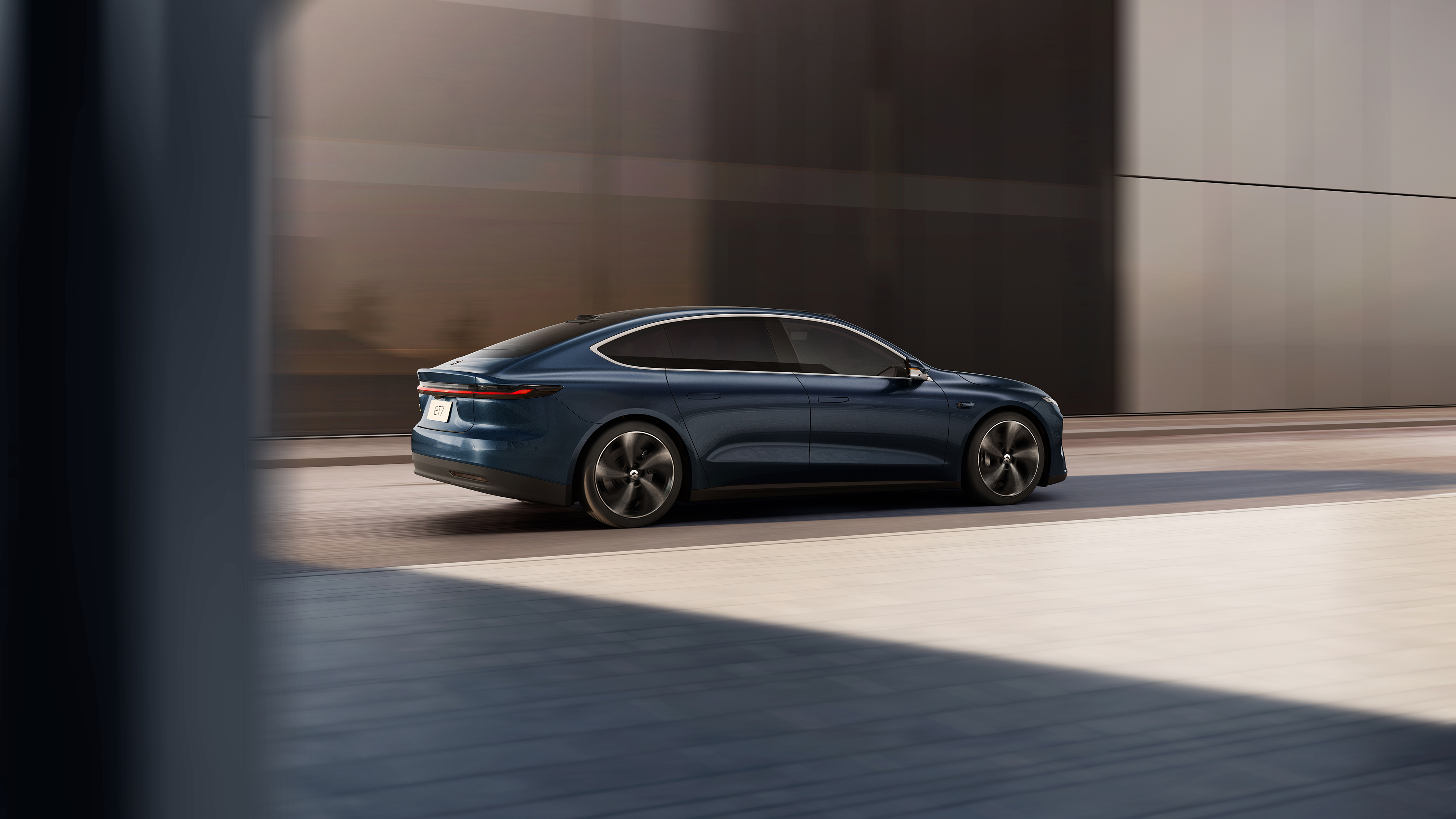 So if we want to sell cars in Europe, Germany is definitely a market that cannot be ignored, given its scale. Therefore, we made this plan based on commercial rationality. As for the challenges and difficulties we will face, they are also part of this plan, which we must face and endure. I think we don’t need to interpret it as such an emotional decision.
So if we want to sell cars in Europe, Germany is definitely a market that cannot be ignored, given its scale. Therefore, we made this plan based on commercial rationality. As for the challenges and difficulties we will face, they are also part of this plan, which we must face and endure. I think we don’t need to interpret it as such an emotional decision.
Q: Previously, Polestar also operated its business in Europe in the form of leasing. What is the difference between NIO and Polestar?
Li Bin: We will not enter the short-term rental market, and we will not spend time cooperating with short-term or daily rental companies. Our minimum unit is “month”, and this is very clear. Therefore, there is a big difference between subscription and simple rental, because if we consider many other value-added services we have, there is still a big difference.
Q: Is it suitable to build a factory in Europe?
Li Bin: It depends on demand. If the demand is high, then we will build it. If the demand is not high, then it is not cost-effective.
Qin Lihong: This is quite dynamic, and it is not suitable to make conclusions today.
Li Bin: It is not cost-effective to build a factory without an increase of one to two hundred thousand units per year.
Q: We set the price this time and found that it is good, the price of the PHEV of Lynk & Co 01, which is 1-3 times the price of 550 euros, what is the price of NIO compared to BMW and Mercedes? What is its profitability cycle, considering the long cycle of our subscription business, heavy asset investment, and product depreciation?
Li Bin: The pricing system for subscription is much more complicated than that of simply selling cars. We not only consider the cost of the vehicle, but also the cost of capital and services. It is a very complicated pricing mechanism. The pricing of subscriptions is to a certain extent used by some companies as a means of clearing inventory or enhancing sales volume. Therefore, sometimes the pricing may be more aggressive.
Some media also ask whether this can quickly increase sales? In fact, that is not the case. Our starting point is still to consider all factors from the perspective of subscriptions, and we still need a sustainable model. We will not do things like losing money to gain popularity. If we look at our subscription pricing, we have basically considered various factors and still need a reasonable gross profit margin for sustainable operation. It is difficult to benchmark apple to apple because the service content included still varies.We don’t take into account the infrastructure or fixed returns on the subscription when it comes to profitability which you are concerned with. We only consider the subscription itself and we certainly think that there is an opportunity to achieve a higher gross profit margin than selling cars, which is undoubtedly true. As for capital, that’s not a problem, there are so many third-party leasing companies out there, and we have worked with several leasing companies in Europe and reached good cooperation intentions, including third-party funds. We certainly won’t use our main cash for this, as it can’t support many cars, and we will definitely leverage third-party funds.
Qin Lihong: In terms of the developed financial market and fine division of labor in Europe and the level of interest rates, it is relatively friendly.
Li Bin: Leasing companies in Europe have fleets of over a million vehicles, with several having fleets with over two million vehicles.
Q: At the earnings call in Q4 last year, I remember your answer to the analyst’s question that the company will achieve a turnaround in profitability in Q4 2023 and achieve overall annual profitability in 2024. Now it’s October 2022, and about six months have passed, and there have been many new changes in the market. Considering various factors, I would like to ask if there have been any changes in your judgment on the balance of profit and loss for NIO.
Li Bin: Yes, this is true, of course, we are still planning our operation rhythm based on this plan. But as you just mentioned, the biggest variable here is indeed the cost of batteries. As you know, the basic range of our NIO battery is 75 kWh, and the long-range is 100 kWh, which is still relatively high for the total average battery capacity.
But the cost of battery materials is very difficult to predict. However, based on the overall situation we are aware of at present, overall, although lithium carbonate has risen again, it is still declining.
We expect that there will be a significant improvement in the supply of lithium next year, and we think that the current high and unrelenting price is not due to real supply and demand, and there are many complex factors involved.
We believe that the price of lithium will definitely go down, because the actual mining cost of lithium iron phosphate (LFP) in salt lakes is USD 5,000 per ton, and even if it is more expensive for other materials, a reasonable price would be around 10,000 USD per ton, so there’s no reason for prices to be so high.
Of course, as you mentioned earlier, if the cost of batteries remains too high, there is no doubt that it will not only be a challenge for us but also for the entire industry’s profitability. Therefore, if we base our assumptions on a reasonable material cost, we will definitely maintain our profit rhythm goal.Then, in Europe, there won’t be much impact, as we mentioned before, only that the cycle for confirming our revenues will be longer. However, overall, we will still set our business model based on a reasonable gross profit margin.
Q: You mentioned before that NIO benchmarked against BMW in China. Now that we are at BMW’s doorstep, do we have any challenges or goals for BBA?
秦力洪: Last time when I was in Chengdu, I had exchanges with many media teachers. (We have more elements of paying tribute to BMW.) Why some products are always used as benchmarks? It’s because others have done a good job. There’s no doubt that BMW has a very strong market position in Germany, both in terms of products and brand appeal formed by history, which gives us a better opportunity to learn from BMW up close. In the end, the quantity does not matter as much as whether we can win our rightful market share. Whether our product strength and service level can win a reasonable respect from users through the way of ultimate consumption, is the most important thing.
I also believe that NIO entering the German market has a certain influence on the local industry, and everyone pays more attention to it.
A few days ago, I saw on a social media platform overseas that someone had taken a picture of our ET7 parked downstairs in a big company’s headquarters. The car was covered in film, probably waiting for this picture to be studied. At that time, we hadn’t received our ET7 in Europe yet, and they were still asking me for the car every day, so everyone was paying attention to each other and learning from each other. I think this atmosphere shows that the industry is good, and the automotive industry is an industry where everyone should promote each other. We should be more calm about this.
Q: What impressed me today was the interesting partnership between the two of you. I would like to ask Mr. Bin and Mr. Li Hong, after talking about many business company issues, a healthy and sustainable global business company must have a tacit and like-minded business partner. Can you combine your actual experience to summarize what makes a good business partner? How can you find a like-minded partner?# 李斌:
Many things are not always attainable. After collaborating with Li Hong for so many years, we did have some disagreements. It is impossible to have a partnership without any disagreements. However, no matter when we work, we always consider the long-term interests of the company. We unify consensus on long-term vision and interests.
In fact, seeking consensus between partners is a very challenging task. There might be no right or wrong many times, but it’s about different perspectives. However, if we can unify our perspective, such as being willing to consider for the long term, prioritize customer’s perspective and put the company’s benefits in the first place, many things would become easier. If the perspective is not unified, it is difficult to evaluate what’s right or wrong.
This article is a translation by ChatGPT of a Chinese report from 42HOW. If you have any questions about it, please email bd@42how.com.
